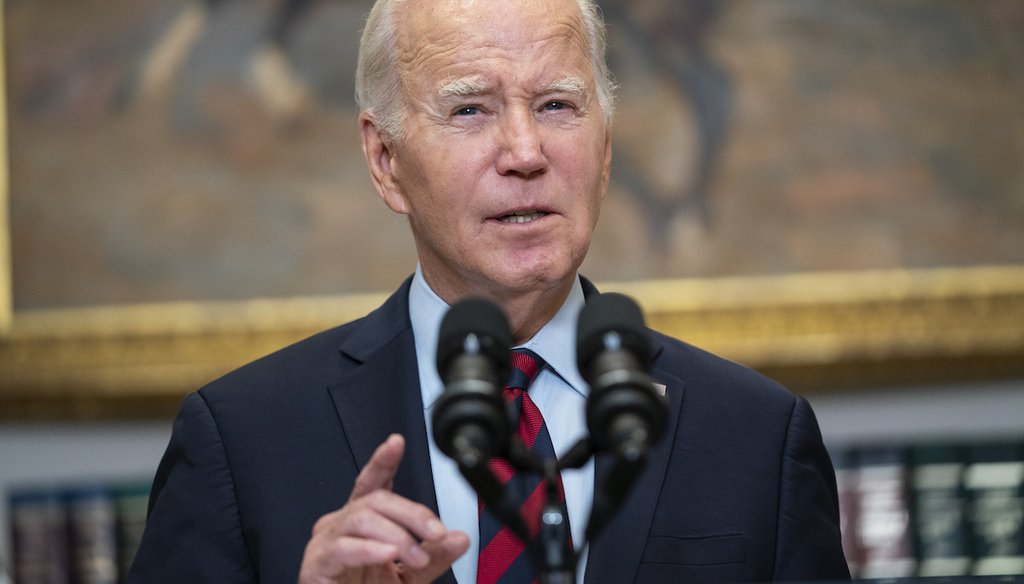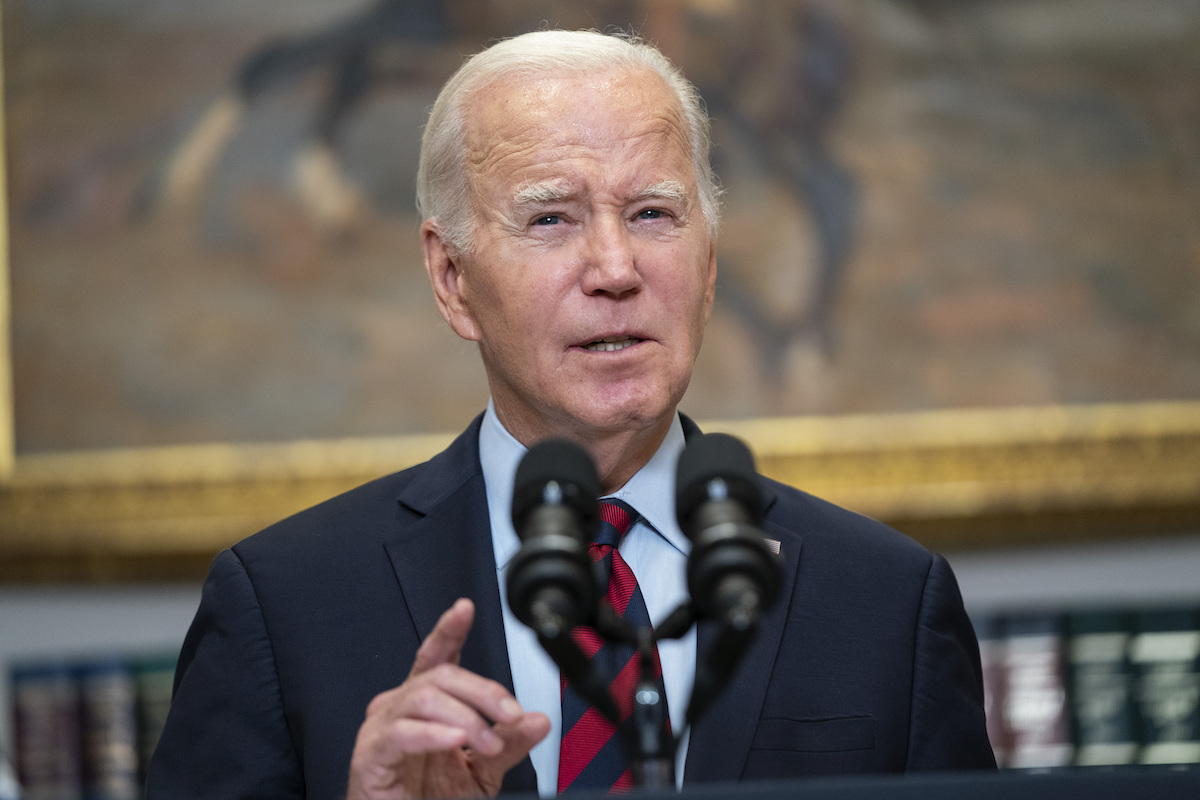Get PolitiFact in your inbox.
Biden unveils new round of incremental student loan relief

President Joe Biden delivers remarks on student loan debt forgiveness at the White House on Oct. 4, 2023. (AP)
President Joe Biden delivers remarks on student loan debt forgiveness Oct. 4, 2023, at the White House. (AP)
In the months since the U.S. Supreme Court struck down President Joe Biden's sweeping student loan forgiveness plan, the White House has expanded relief to more borrowers incrementally.
On Oct. 4, Biden announced new initiatives that he said would bring "an additional $9 billion in relief for 125,000 borrowers."
Biden said his administration has now canceled $127 billion in student debts for nearly 3.6 million Americans. That's about 31% of the amount in his original plan that the court rejected.
Biden's Education Department announced:
-
$5.2 billion in additional debt relief for 53,000 borrowers under the Public Service Loan Forgiveness program. This existing program allows borrowers who work in government or nonprofits to see some or all of their remaining debt canceled.
-
Nearly $2.8 billion in new debt relief for about 51,000 borrowers who have income-driven repayment plans. Under these plans, borrowers' monthly student loan payments are set at an amount calculated to be "affordable" based on their income and family size. The affected borrowers will have been in repayment for 20 or more years but "never got the relief they were entitled to," the Education Department said.
-
$1.2 billion for nearly 22,000 borrowers who have a total or permanent disability confirmed by the Social Security Administration.
As with other efforts undertaken by Biden, these changes are aimed at "reducing red tape" and "addressing past administrative failures," the Education Department said. The effort relies on well-established loan-forgiveness programs that legal experts consider to be on more solid legal ground than the plan the Supreme Court rejected.
Previous initiatives announced July 14 targeted borrowers whose payment records had been misrecorded to their detriment; such mistakes were related to uncounted payments and incomplete or misleading guidance about how to comply with loan procedures.
This earlier phase of debt relief was designed to forgive $39 billion in debts accumulated by some 804,000 borrowers, the administration said.
Student loan payments restarted Oct. 1 following a pause during the coronavirus pandemic. Interest began accruing Sept. 1.
The Supreme Court struck down a much larger plan that would have eliminated $400 billion in student loans for tens of millions of borrowers and would have met Biden's original promise to forgive undergraduate tuition-related federal student debt for borrowers earning up to $125,000.
But opponents sued to block this effort, and June 30, a 6-3 Supreme Court majority struck down Biden's plan for broad relief. The court said Biden's justification for the move — a post-9/11 law called the HEROES Act — provided an insufficient legal basis.
Student loan experts have told PolitiFact that they don't expect the new, narrower changes, including the round announced Oct. 4, to face the same legal hurdles Biden's broader forgiveness plan did.
Biden's efforts since the Supreme Court decision have been narrower than his campaign proposal, but they have expanded over time. For now, this promise stays at In the Works.
Our Sources
White House, "Remarks by President Biden on the Administration's Efforts to Cancel Student Debt and Support Students and Borrowers," Oct. 4, 2023
Education Department, "Biden-Harris Administration Announces an Additional $9 Billion in Student Debt Relief," Oct. 4, 2023
The New York Times, "Biden Cancels an Additional $9 Billion in Student Loan Debt," Oct. 4, 2023
The Washington Post, "Biden touts $9B more in student loan forgiveness, progress in debt relief," Oct. 4, 2023
Axios, "Biden announces $9B of student debt relief as payments resume," Oct. 4, 2023

